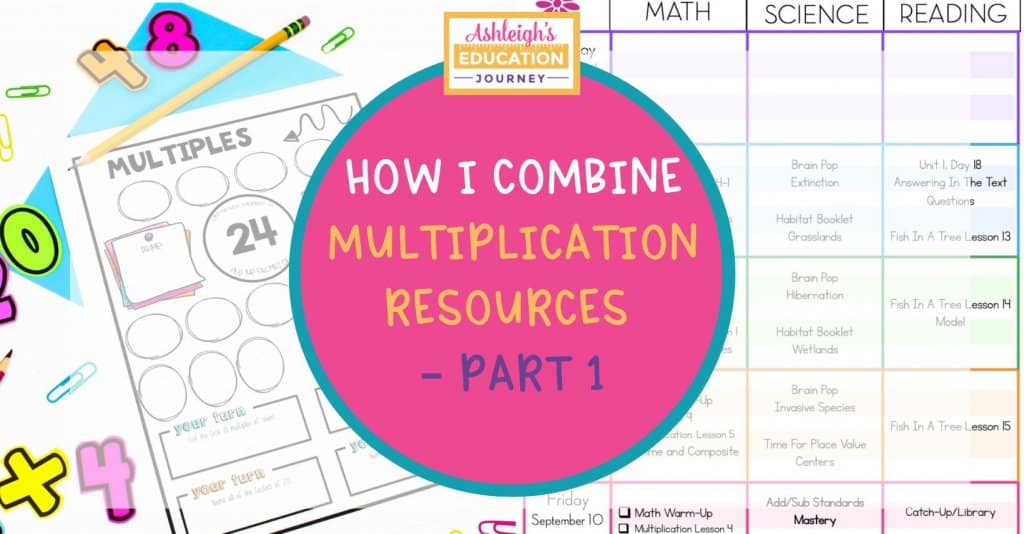
After teaching place value and rounding, my next math unit is multi-digit multiplication. Since time is always a concern, I jump into this unit and pick up right where I left off with my previous unit. You can read more about my place value lesson plans and instruction here.
In this post, I hope to help you streamline your instruction by sharing how I combine and utilize my most essential resources. Since I spend a long time teaching multiplication, I’ve broken this post into two parts. This first part shows how I teach factors, multiples, and multiplication as a comparison. It also shows how I prep students for multi-digit multiplication (which I will address in Part 2).
 I should probably begin by acknowledging that this is a long unit. It can be tempting to skip some of these lessons and hurry on to the next unit. But, it’s so important to give students time to process and develop a deep understanding of multi-digit multiplication. You will have some students who could easily skip a week or more of this unit, but you’ll also have some who will need even more time that what’s embedded here.
I should probably begin by acknowledging that this is a long unit. It can be tempting to skip some of these lessons and hurry on to the next unit. But, it’s so important to give students time to process and develop a deep understanding of multi-digit multiplication. You will have some students who could easily skip a week or more of this unit, but you’ll also have some who will need even more time that what’s embedded here.
Week 1 – Factors & Multiples
Math Warm-Ups
In this week’s Math Warm-Ups, the Error Analysis activity replaces the Which One Doesn’t Belong activity. In the Error Analysis problem, the error is often not found in the computation. Instead, the error may be found in the representation of the problem. The goal is to help students focus on the meaning of the problem, not isolated computation.
Math Check-Ups
This week’s check-ups are short and sweet. The do not include factors and multiples since they are still being introduced to students.
Math Centers
This is students’ third and final week with their Place Value Centers, so no new activities are introduced. Even though I have started a new unit, I don’t want to add this concept to centers too soon. I prefer giving a conceptual foundation on the concept before adding the topic to centers.
Math Scribble Notes
This week’s Scribble Notes help introduce factors and multiples. Students can refer to this page any time during the year. Once again, I incorporate these notes into a portion of my mini-lesson.
Multiplication Lessons
The vast majority of my multiplication lessons are from my 4th Grade Multiplication Unit. I focus on the concept to help students discover patterns and relationships in multiplication. These lessons are accessible to all students, but you may find that some students need more scaffolding and modeling than others. You can read more about teaching factors and multiples here.
Assessment
Once again, I continuously assess students’ progress through the check-ups and our math tasks. However, those assessments are “in-progress” assessments. At this point in the year, I definitely don’t expect mastery with factors and multiples. At the end of the week, I give our formal addition and subtraction assessment, because I will have worked with students who needed the extra instruction through small groups.
When it comes to finding formal assessments, there are many options to chose from. You can use digital programs such as Study Island, which make grading a breeze. I’ve also made sets of math assessments. I have a short answer version. There is also a multiple choice version. You can absolutely combine these resources together or add them to your existing assessments.
Week 2-Multiplication as a Comparison
Math Warm-Ups
You can see how the math warm-ups are slowly getting more challenging. For example, counting by tens when starting at larger numbers presents a huge challenge for students. At this point in the year, the measurement word problems are still not incorporating multi digit multiplication or division, as students aren’t ready for that type of computation yet.
Math Check-Up
The check-ups remain short and focus on the most essential skills previously taught. I’ll begin to reduce the number of problems as the questions get more challenging for students, because I don’t want this to become a time consuming task.
Math Scribble Notes
During a mini lesson, students complete Multiplication Situation Scribble Notes. It highlights equal groups and arrays but the emphasis of the page is on multiplication as a comparison.
Math Centers
This week I introduce a new set of math centers. Since we’re at the beginning phase of our multiplication unit, the emphasis of the centers remains on place value, addition, subtraction, and general number sense.
Logic Puzzles
There are two logic puzzles in this set of centers. Logic is often a considerable challenge for children, but it’s a valuable experience. I love the fact that includes deductive reasoning along with computation practice.
Subtraction Target
In this subtraction game, students roll three 9-sided dice to form a 3-digit “target number”. Then, they roll one of the dice, and each student secretly decides where to write the number. Students repeat this process until all spaces are filled. Then, both teams subtract to find their differences, and the team that’s closest gets a point for that round.
Value Match
This is another fun game for students. Students shuffle the cards and deal each player four cards face-up for all to see. One each turn, students can do one of three things: 1. Find two of their own cards that have an equal value. 2. Trade one of their cards with one of the other team’s cards to make a match. 3. Draw a card from the top of the pile. At the end of the the game, the player with the most matches wins.
Dividing Seashells
This is a hands-on division activity that reviews the concepts of number of groups and the number in each group. I like to incorporate this lesson before we begin our division unit.
The Remainder Game
This game also reviews the concept of division and remainders. It too can be played before your division unit. This helps activate students’ prior knowledge on division in a low-risk, game format.
Math Journal & Number of the Day
To be 100% honest, this isn’t my students’ favorite activity. They typically don’t love writing about math. However, this is such a great way to help students process and organize their thinking. Since students typically finish the journal prompt in a fairly short period of time, they’ll also complete the Number of the Day activity.
Error Analysis
In this set of math centers, the error analysis focuses on addition and subtraction. I like to have students explain why the error is a common error.
Factors and Multiples
This game does focus on what students are currently learning in class. This requires critical thinking and is great practice for applying what students have learned with factors and multiples.
Multiplication Bump
Students always love BUMP games, so I used that strategy to give students practice multiplying by multiples of 20, 30, and 50. As we progress into multi-digit multiplication, that is typically a challenge for some students, so this is great reinforcement.
Roll and Review
This is the same game as in the first set of centers. But, it is a cumulative review, so there is a greater variety of questions in this set of centers.
Math Lessons
As you look through my weekly plans, you may notice that I occasionally skip lessons. There will never be a one-size-fits-all resource, so I encourage everyone to do what works best for their students. As I plan for the year as a whole, I sometimes need to find lessons I can skip or combine in order to squeeze in more time. This week’s lessons focus on multiplication situations, with an emphasis on multiplication as a comparison. You can read more about those lessons here.
Assessment
This is one of the few times I take a formal assessment the same week that I introduce a concept or skill. If I feel that students need more time, I can easily push back the assessment another week.
Week 3-Multiples of 10, 100, & 1,000 and the Distributive Property
Before moving 100% into multi-digit multiplication, I spend another week ramping students up for multi-digit multiplication. While it may seem excessive, it makes a huge difference in students’ ability to grasp the concepts. When we move too quickly through these concepts, students are not able to process and find connections and relationships.
Math Warm-Ups
The ten frame will continue to be a valuable tool as students transition to unitizing and multiplicative thinking. Counting the room always leaves me surprised at how challenging it is for students.
This week the game Splat! replaces the number line. In this activity, you show students a slide with a random collection of dots. Collective agree on how many dots there are.
Then, SPLAT! Some of the dots are covered. Have students determine how many dots are covered by the paint blob. This forces students to think about parts and wholes.
After students make their prediction, show a slide with a translucent blob to confirm the results. At this time, discuss what strategies students used to determine the missing quantity.
Math Check-Ups
The check-ups continue in the same format for the week as students are not yet ready for independent multi-digit multiplication. However, I do include multiplying by multiples of 10 and 100.
Math Centers
This is students’ second week on their math centers. Since there are no new activities to introduce, students will already know the procedures and directions for each of the tasks in this set of centers.
Scribble Notes
This week students complete the multiplying by multiples of ten and hundred page of their scribble notes. I use this as part of a mini lesson.
Distributive Property Lessons
A great way to review the distributive property is through a matching lesson. I give students a collection of arrays, and students work in a group to match the blue arrays with two green arrays that can be combined to have the same dimensions and product.
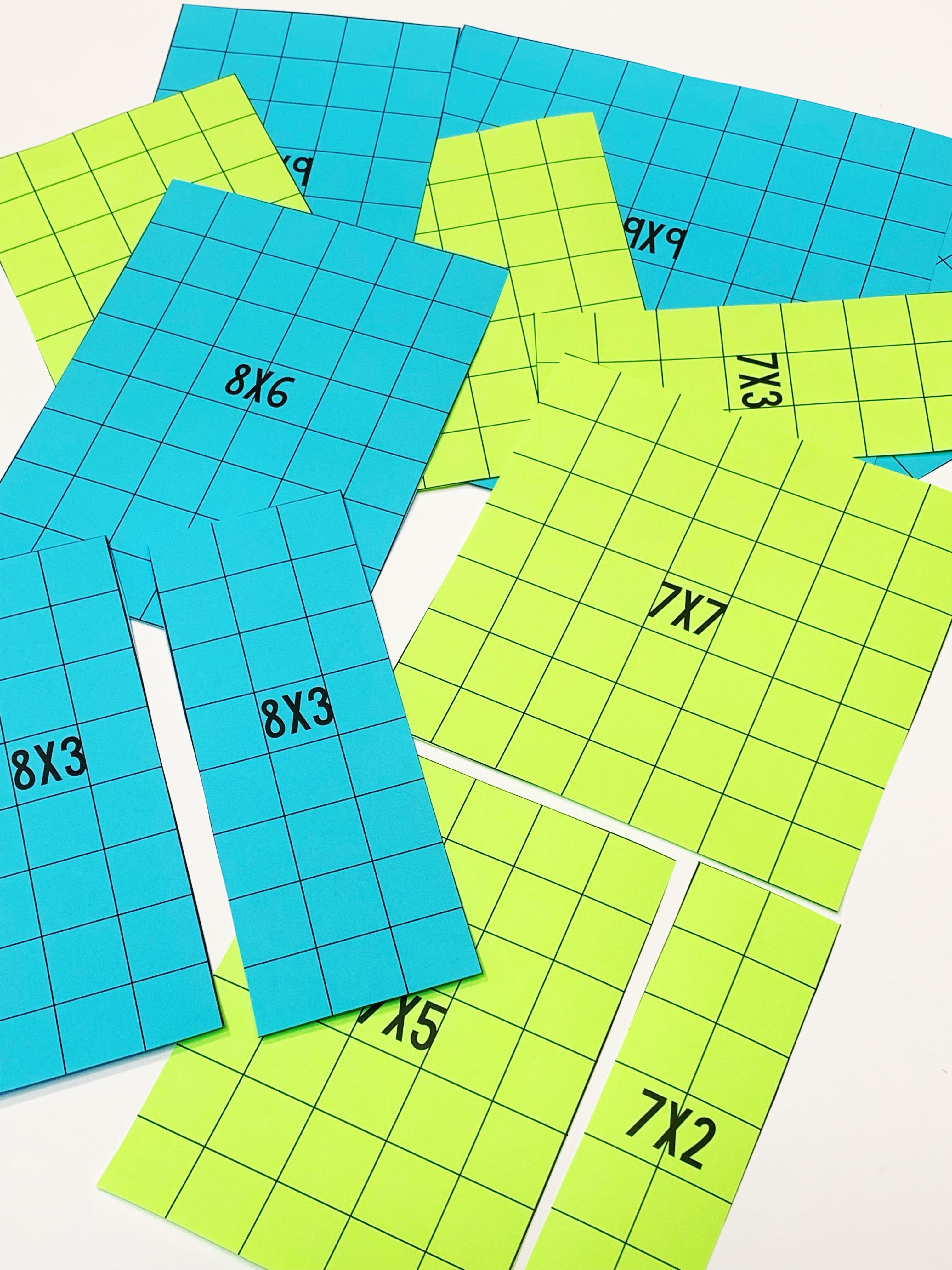
In a following lesson, students complete a cut and paste activity. Assign groups different multiplication problems and have students try to make as many arrays as possible to model how to use the distributive property to solve the problem.
You can follow the cut and paste lesson with an activity where students break apart multiplication problems on a small section of grid paper.
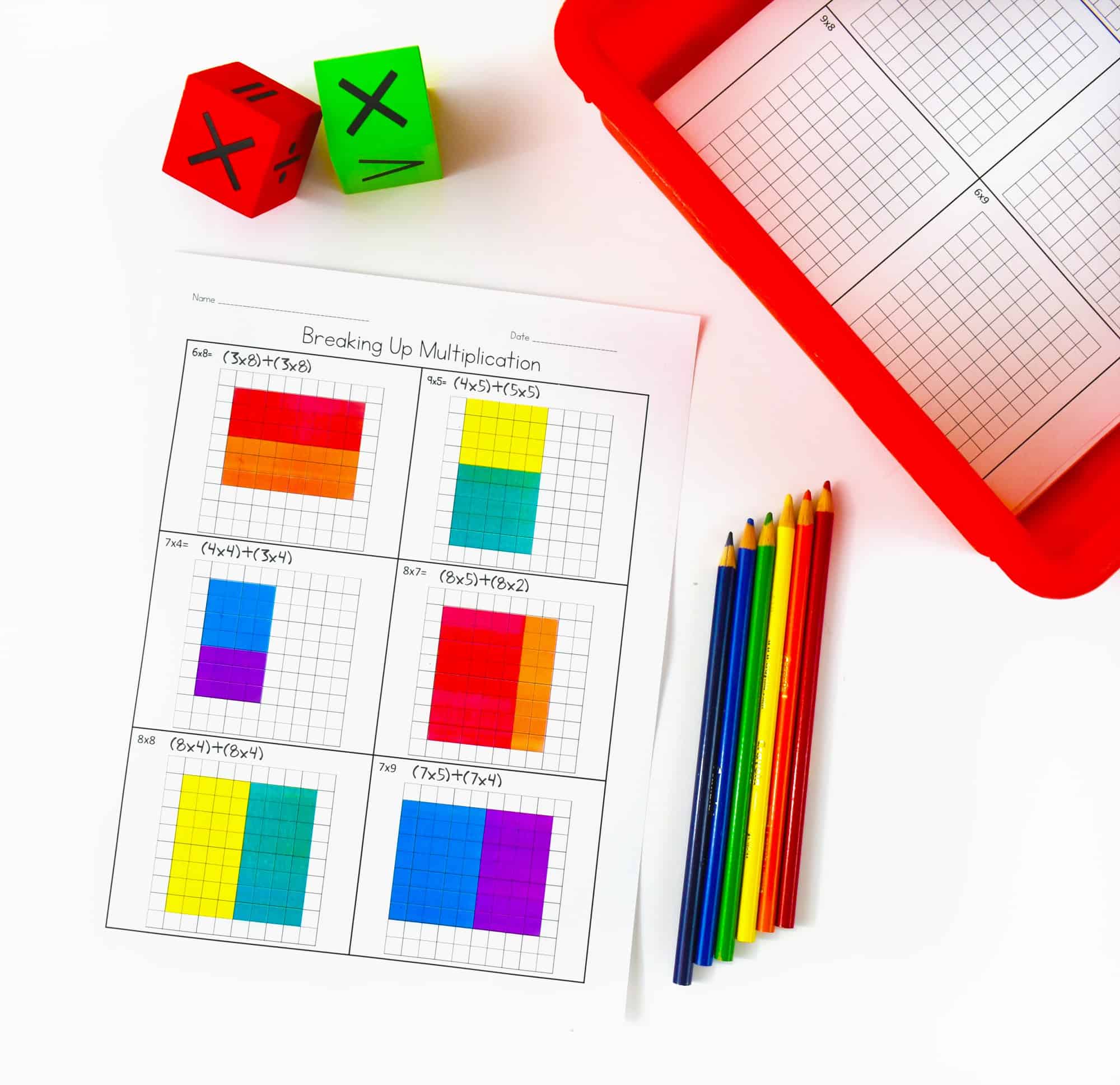
Assessment
On weeks that I have no formal assessments planned, I use that time to reassess as needed. This built in time is always valuable for us, because you never know what events and surprises are going to pop up.
In my following post, I’ll share the strategies I use for teaching and assessing multi-digit multiplication.

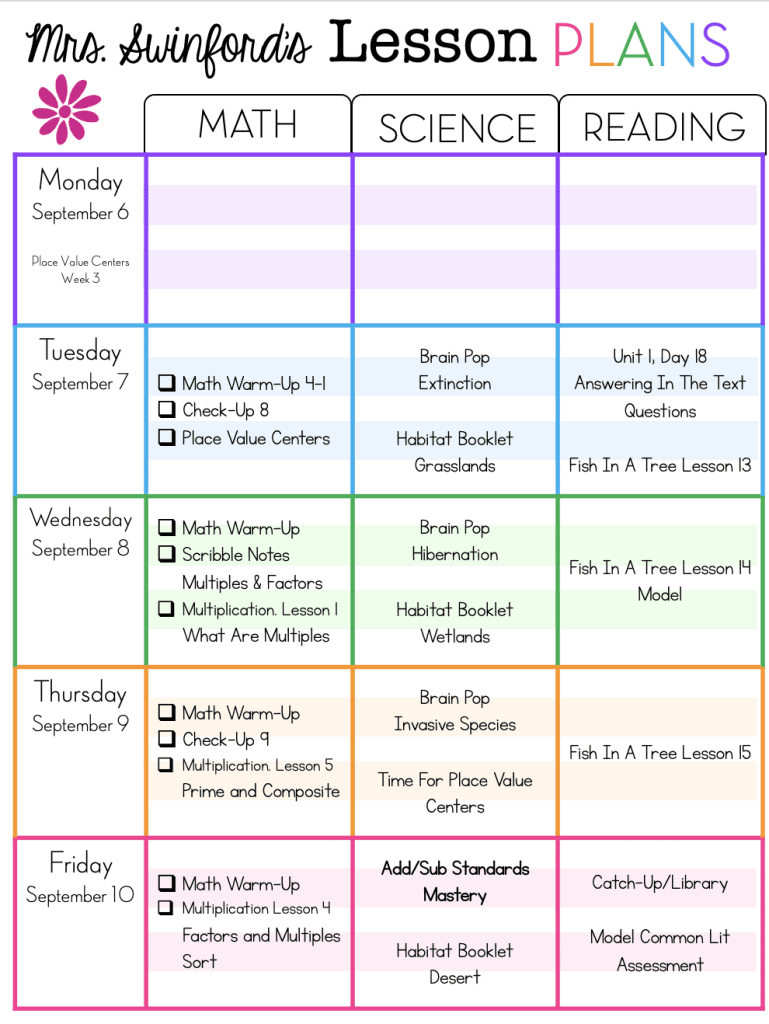
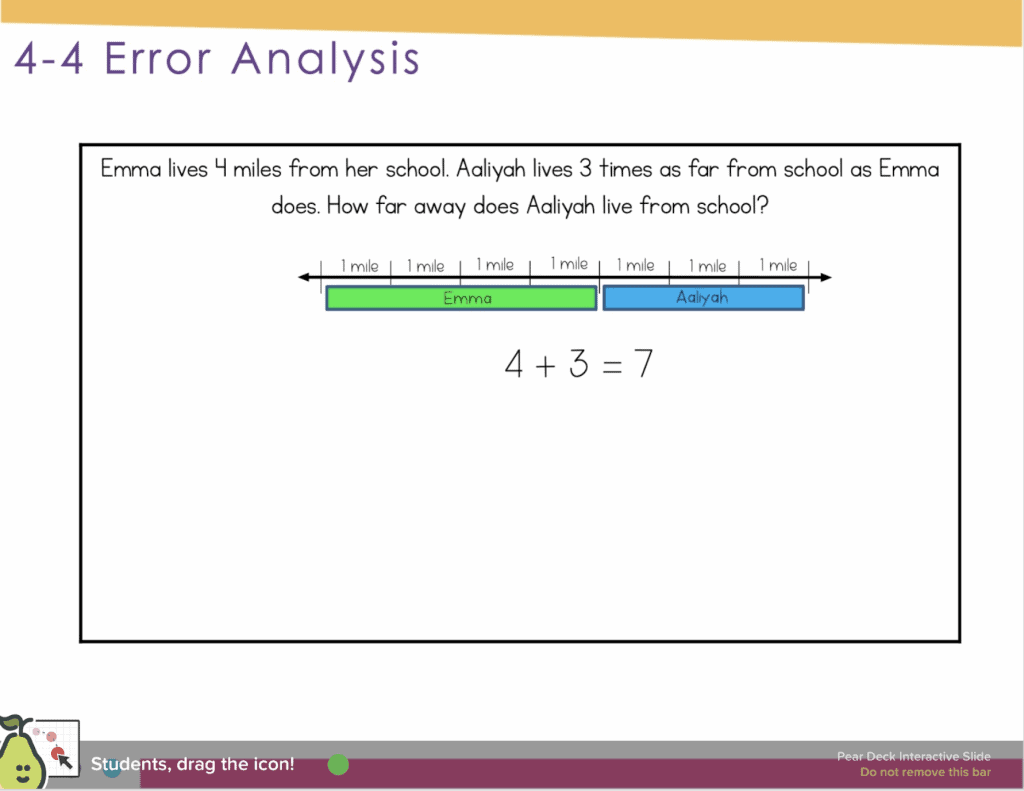
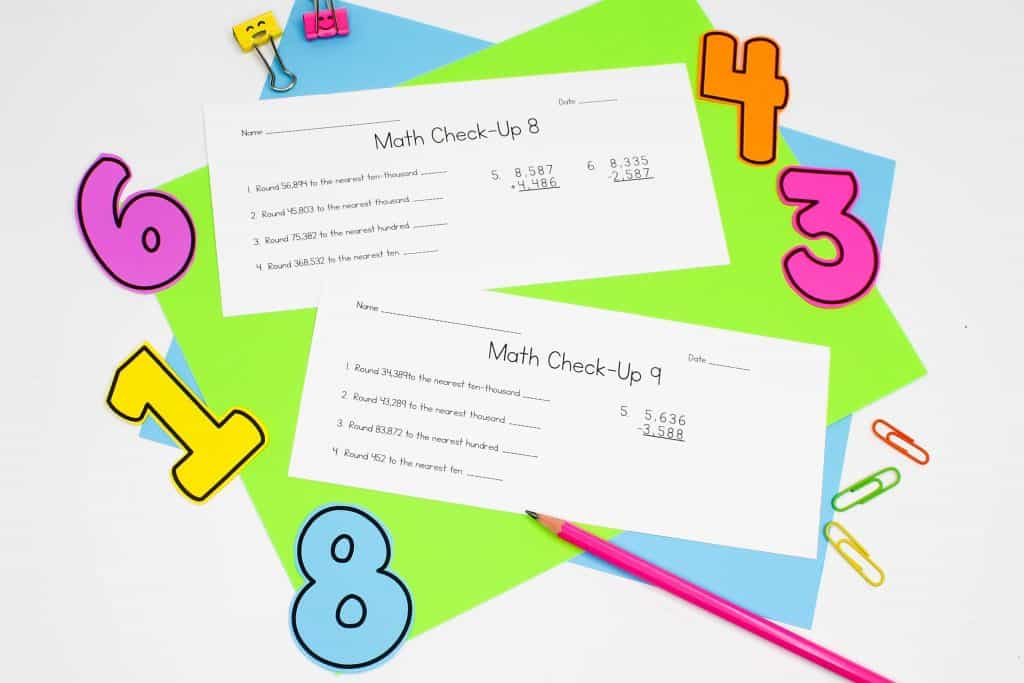
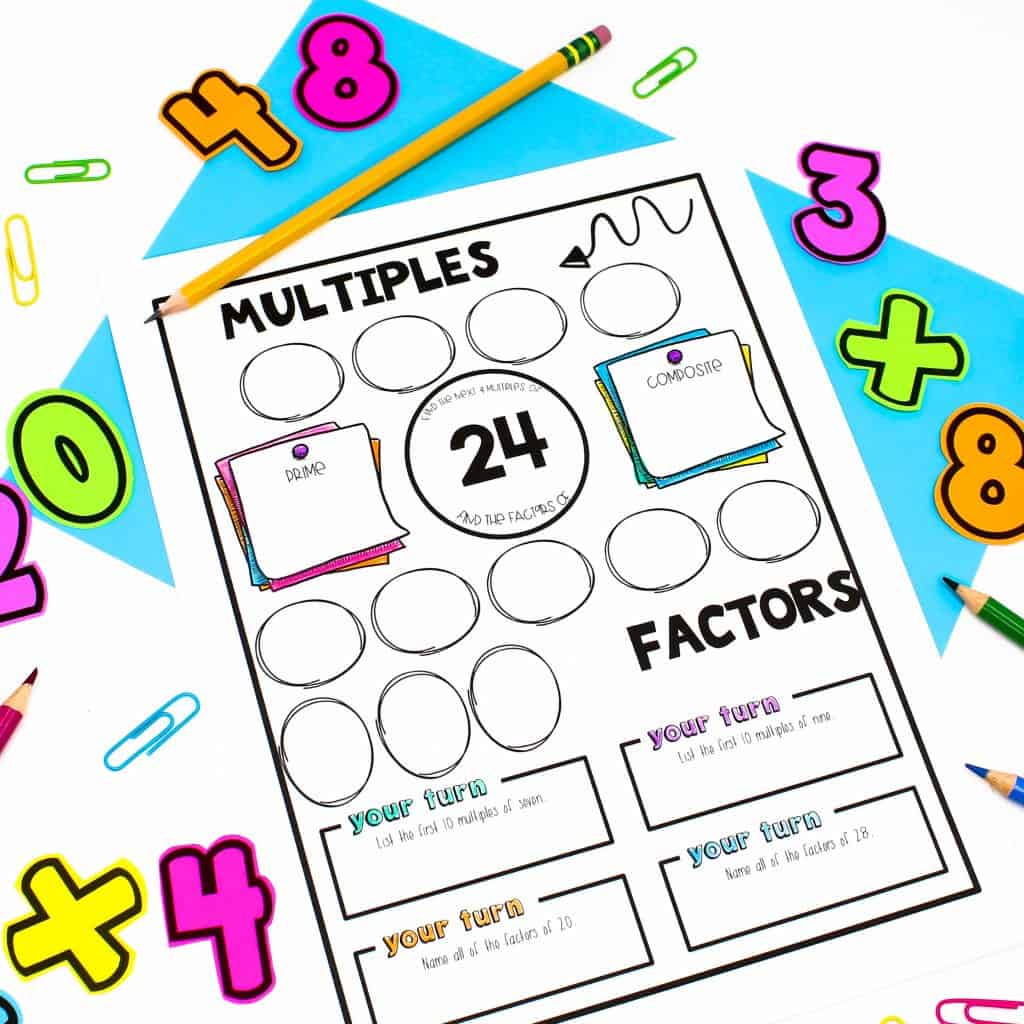
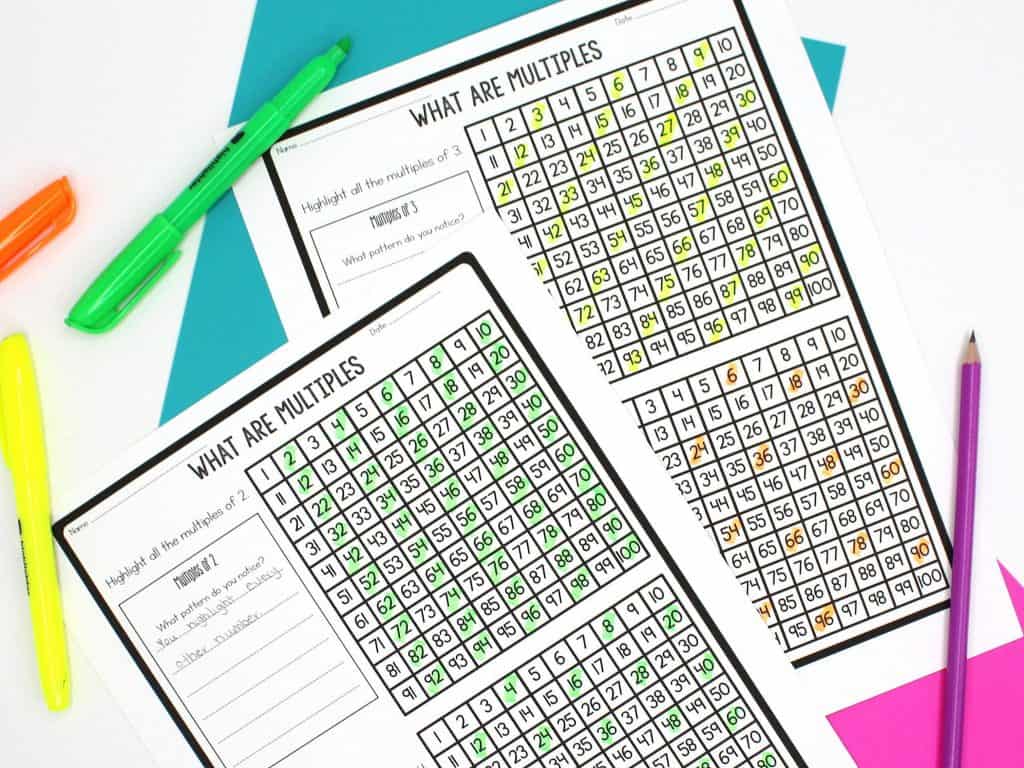
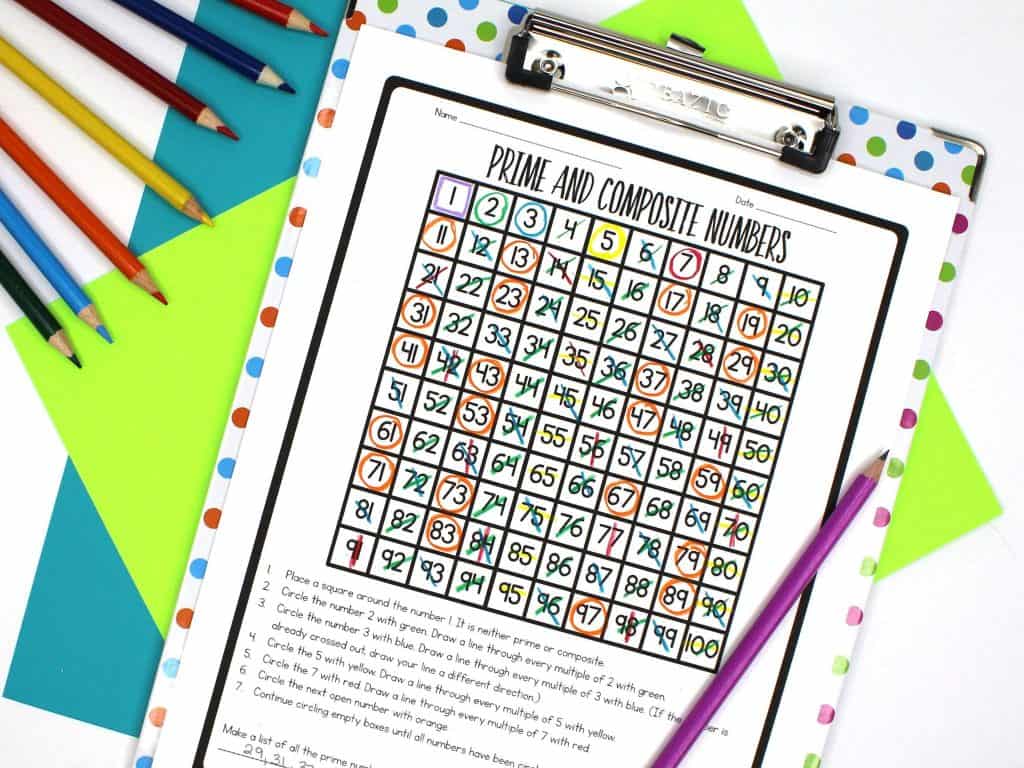

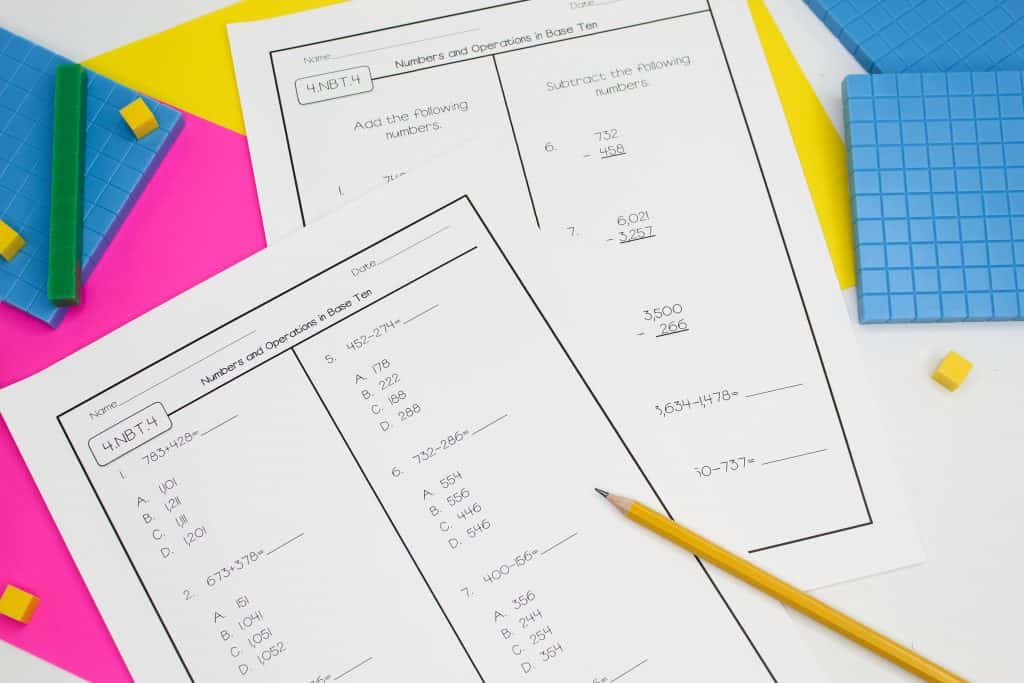
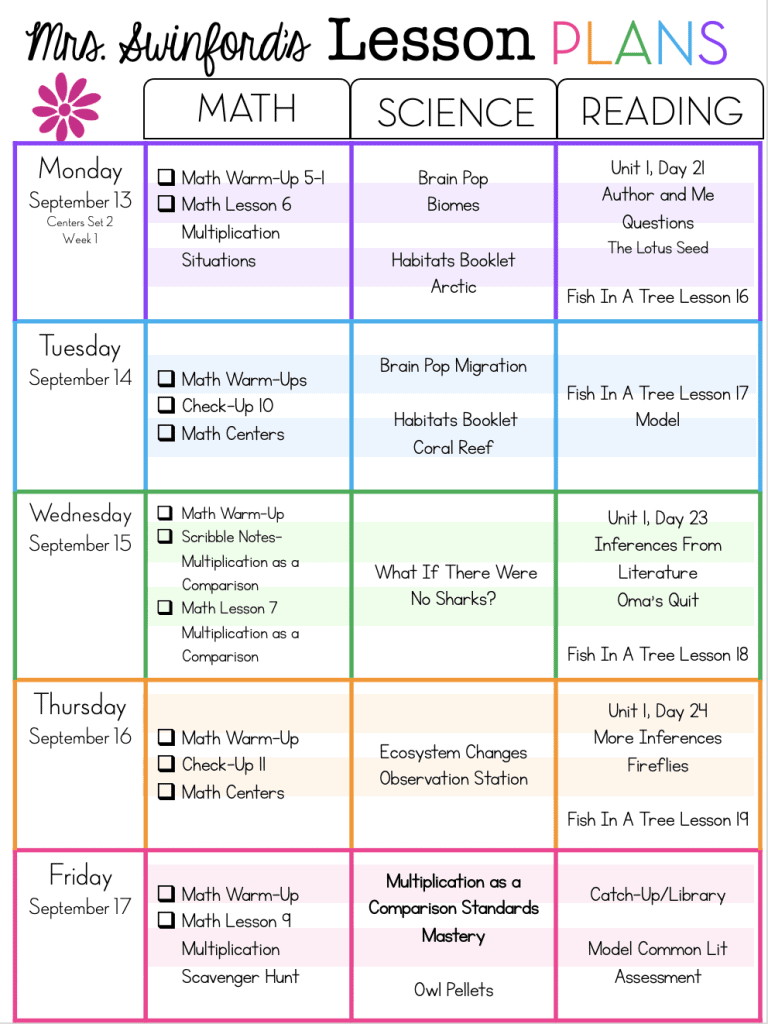
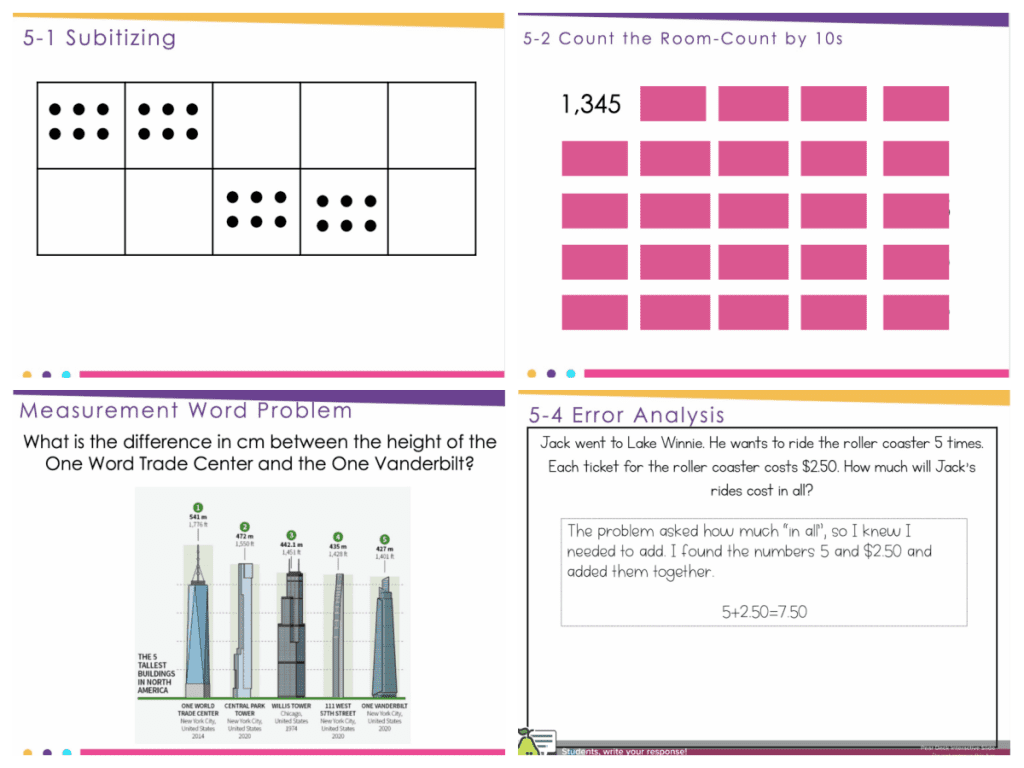
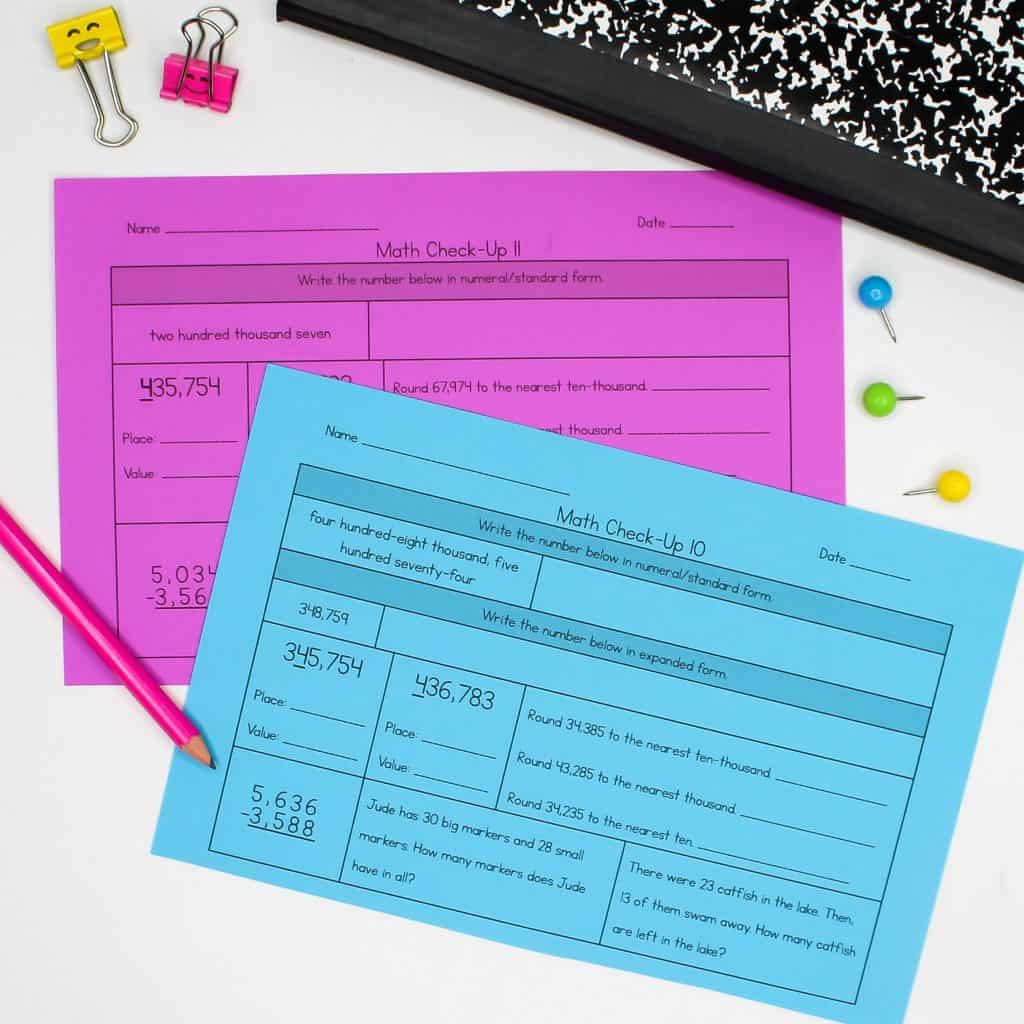
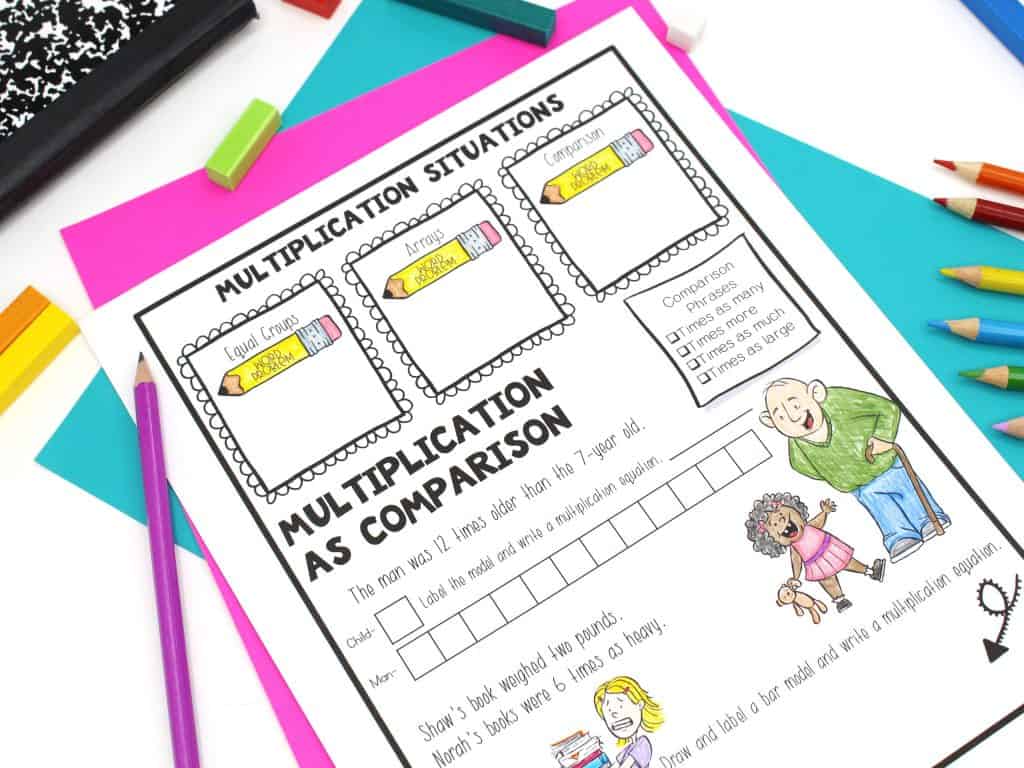
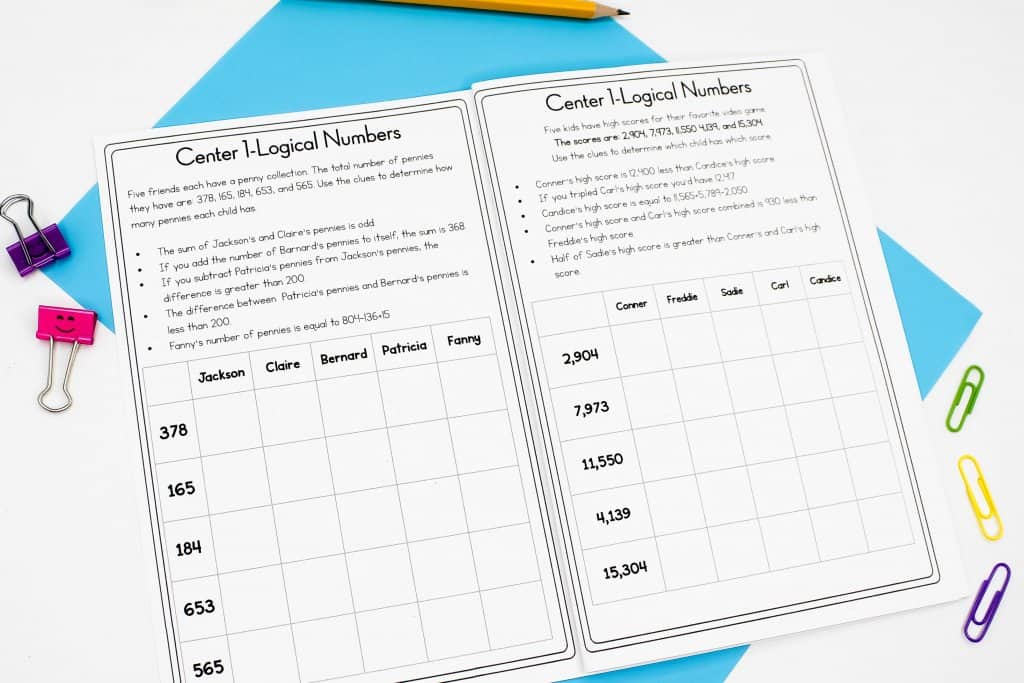
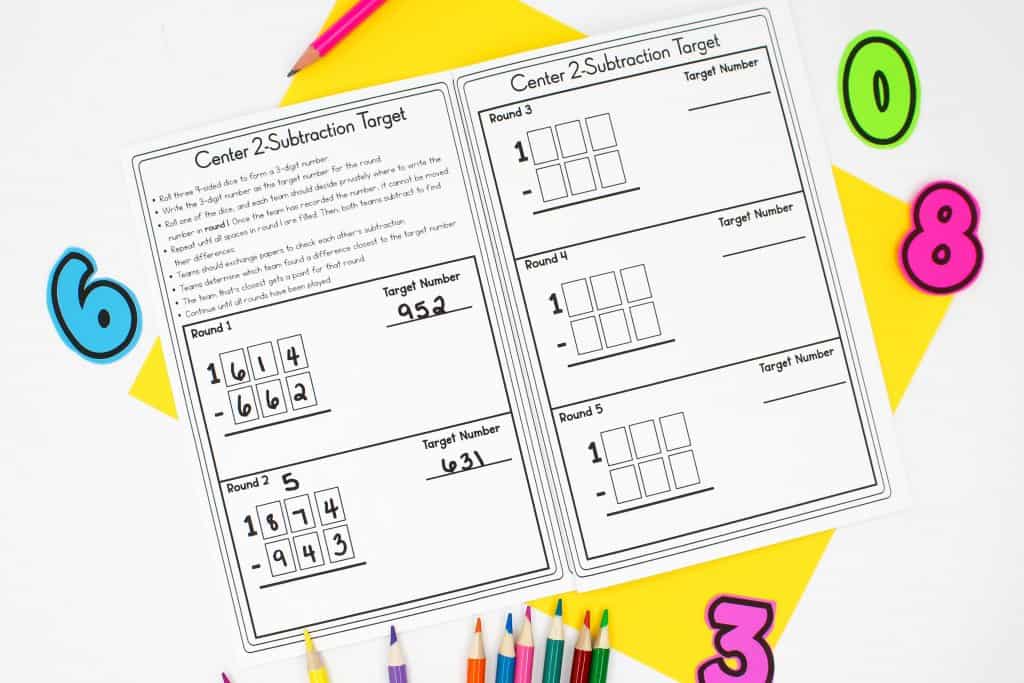
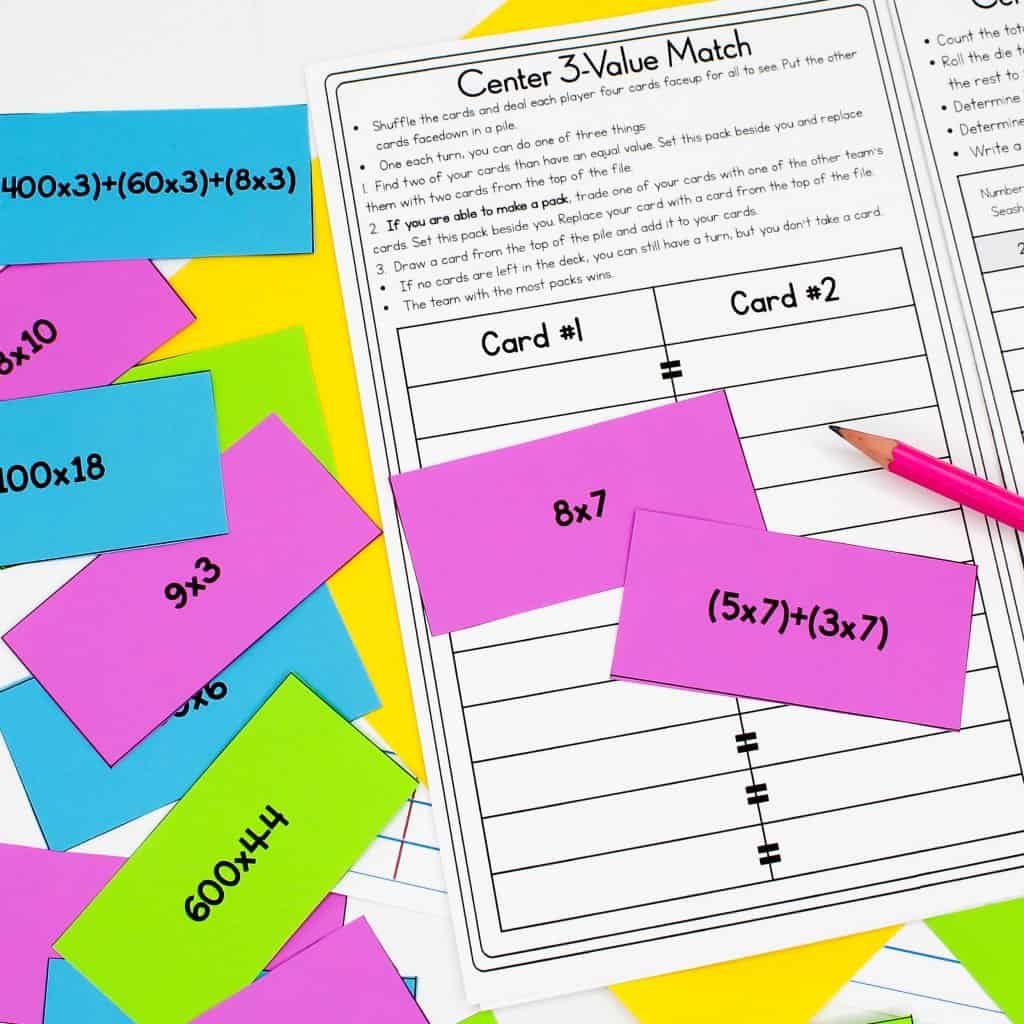
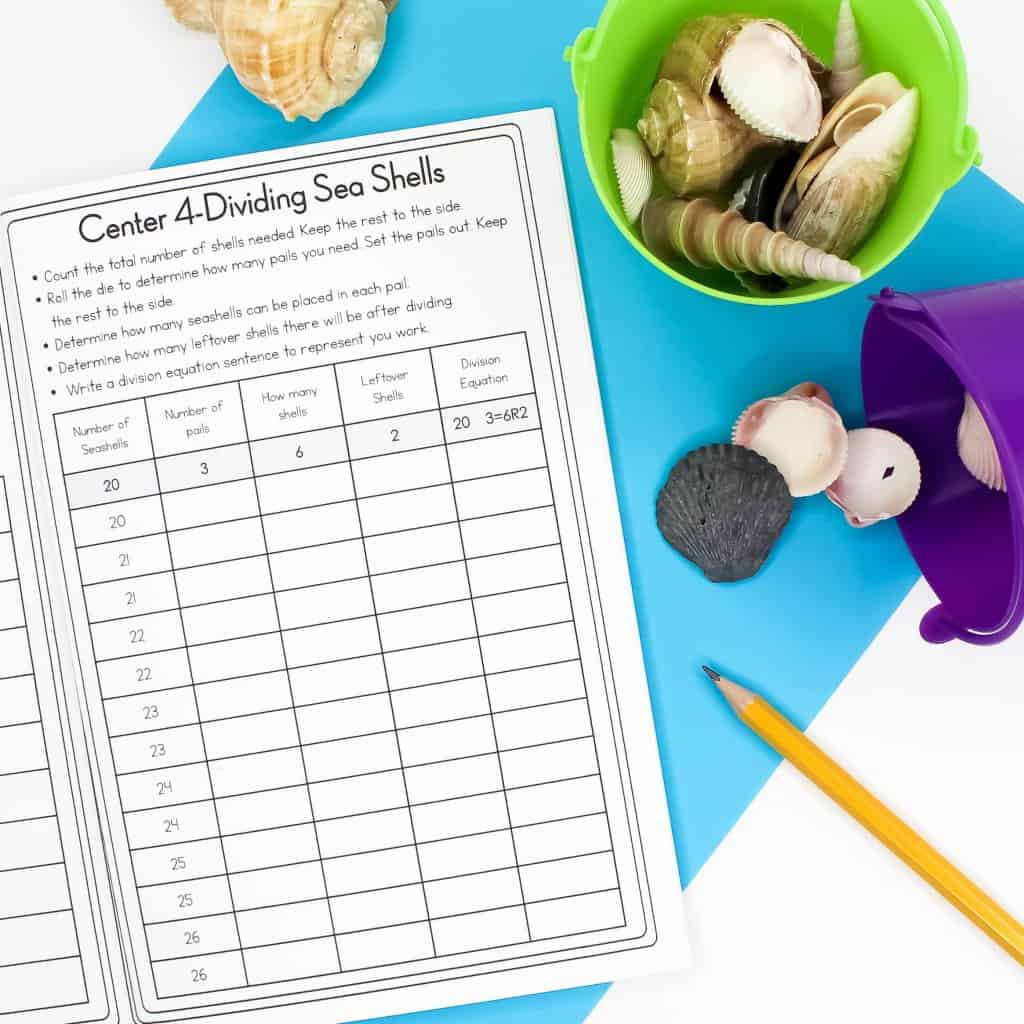
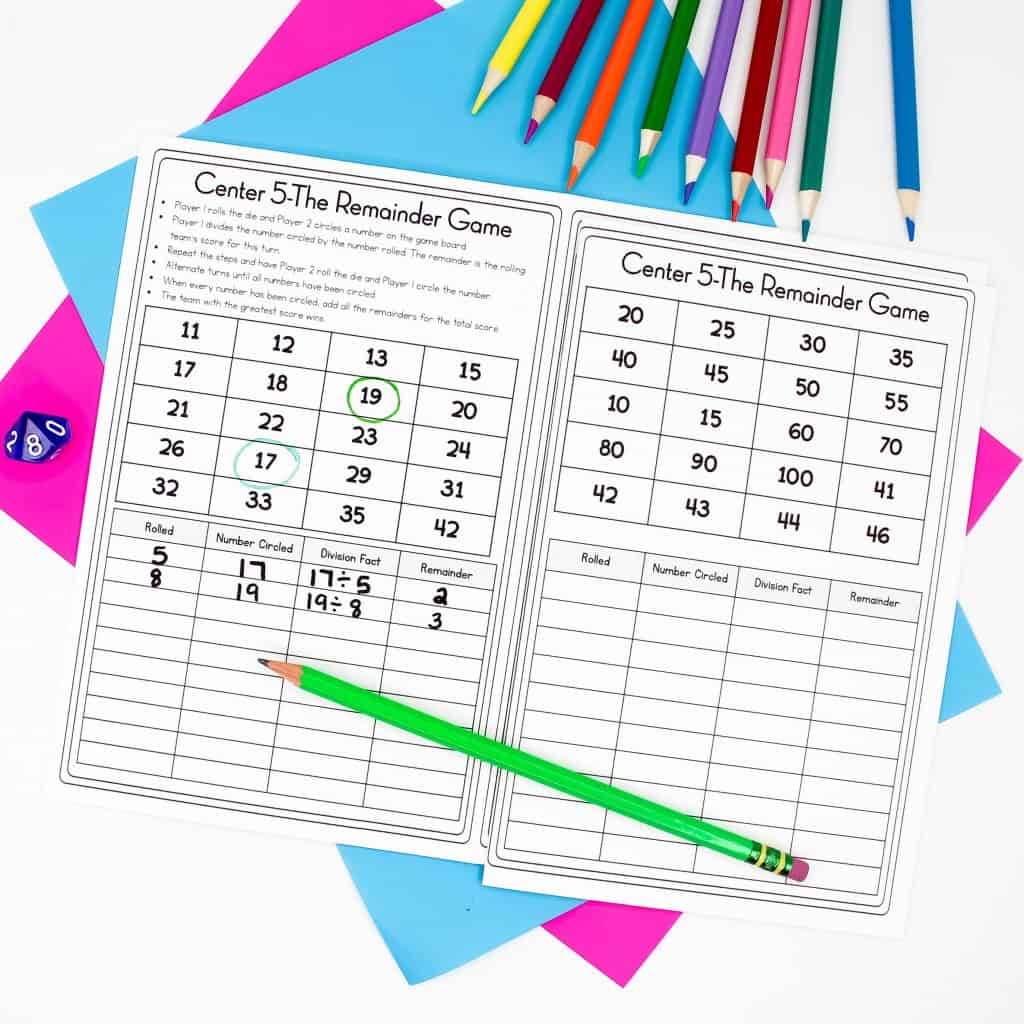
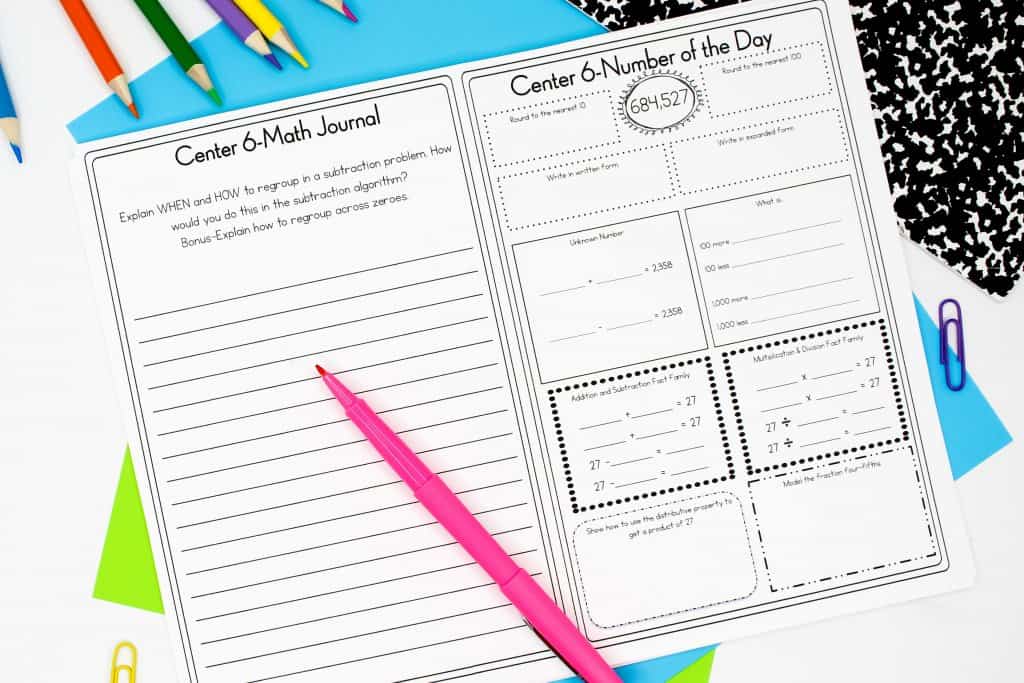
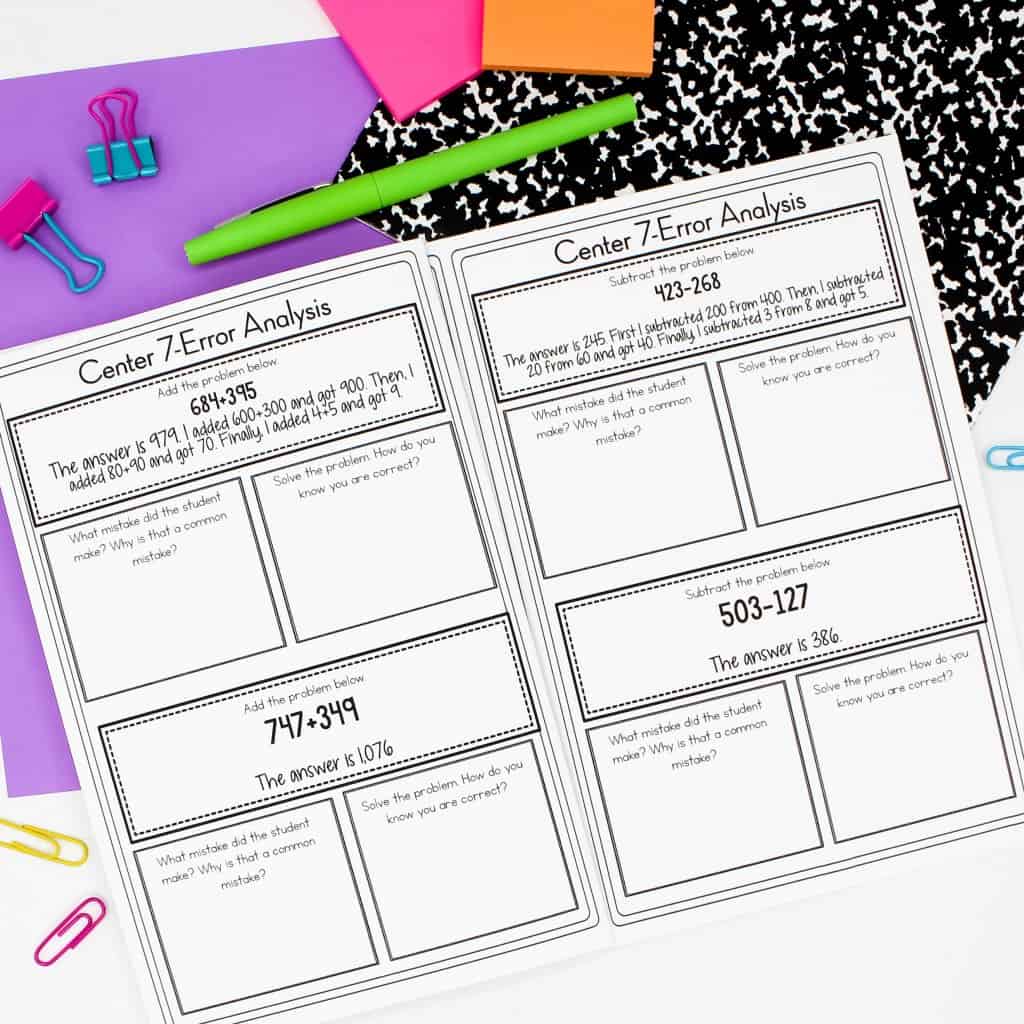
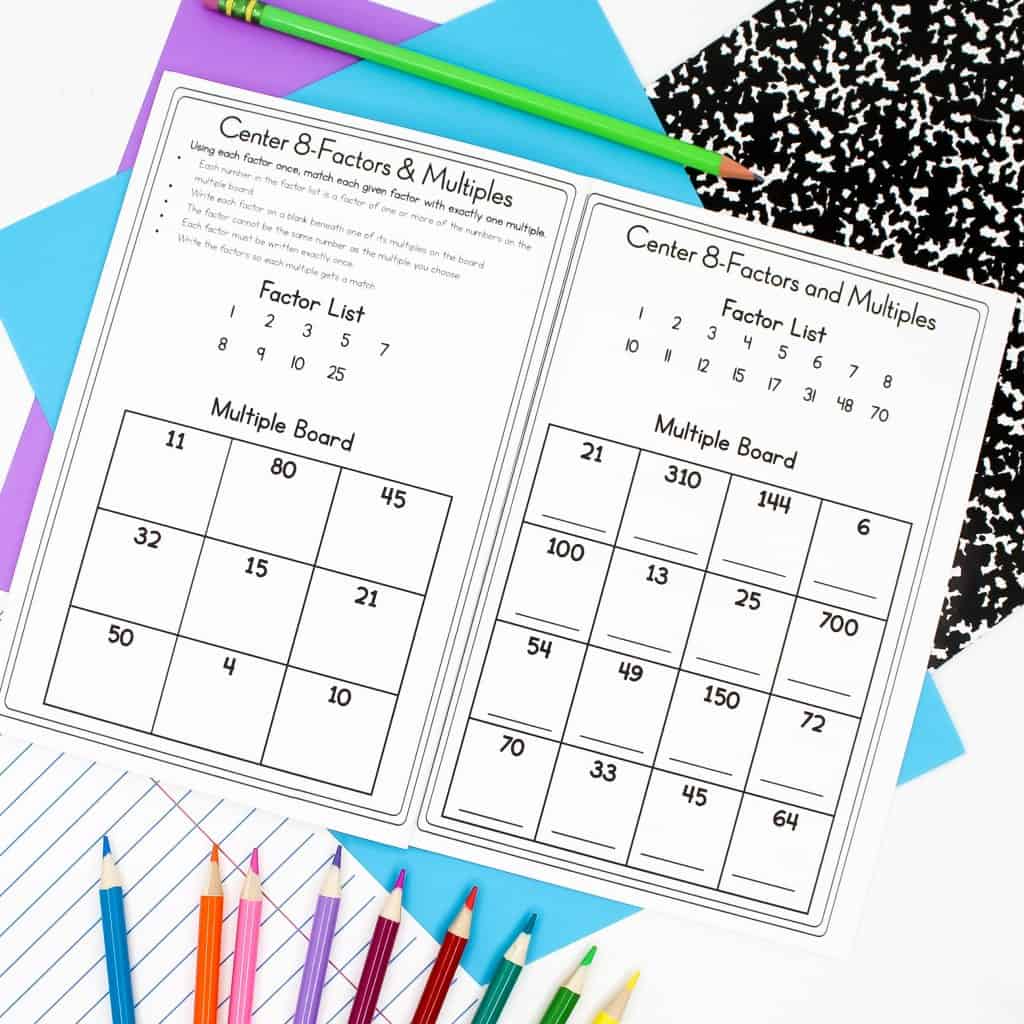
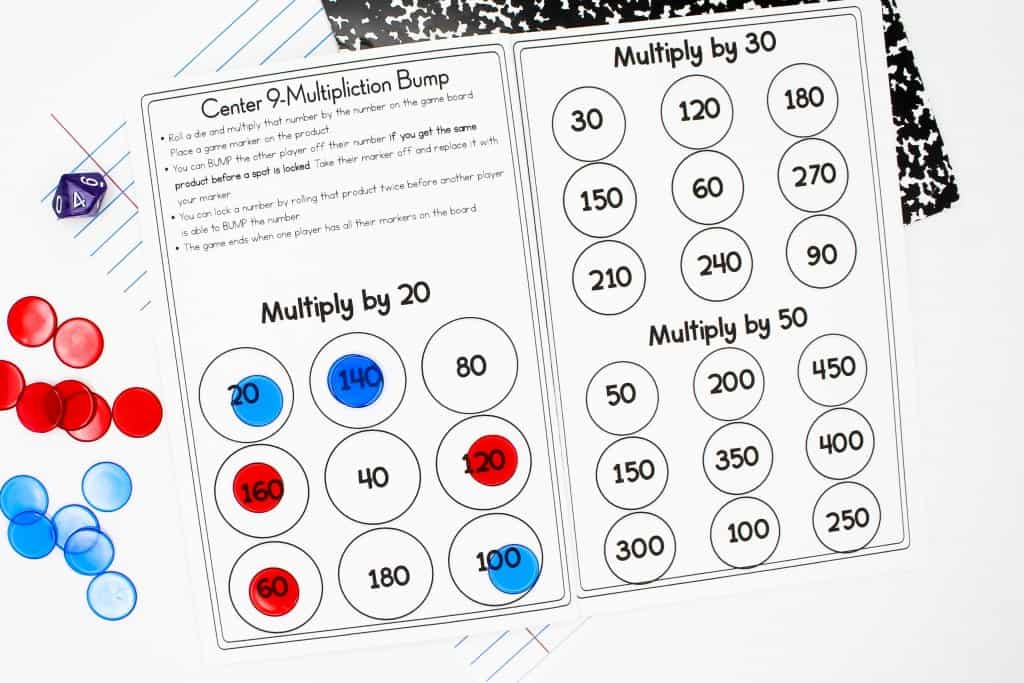
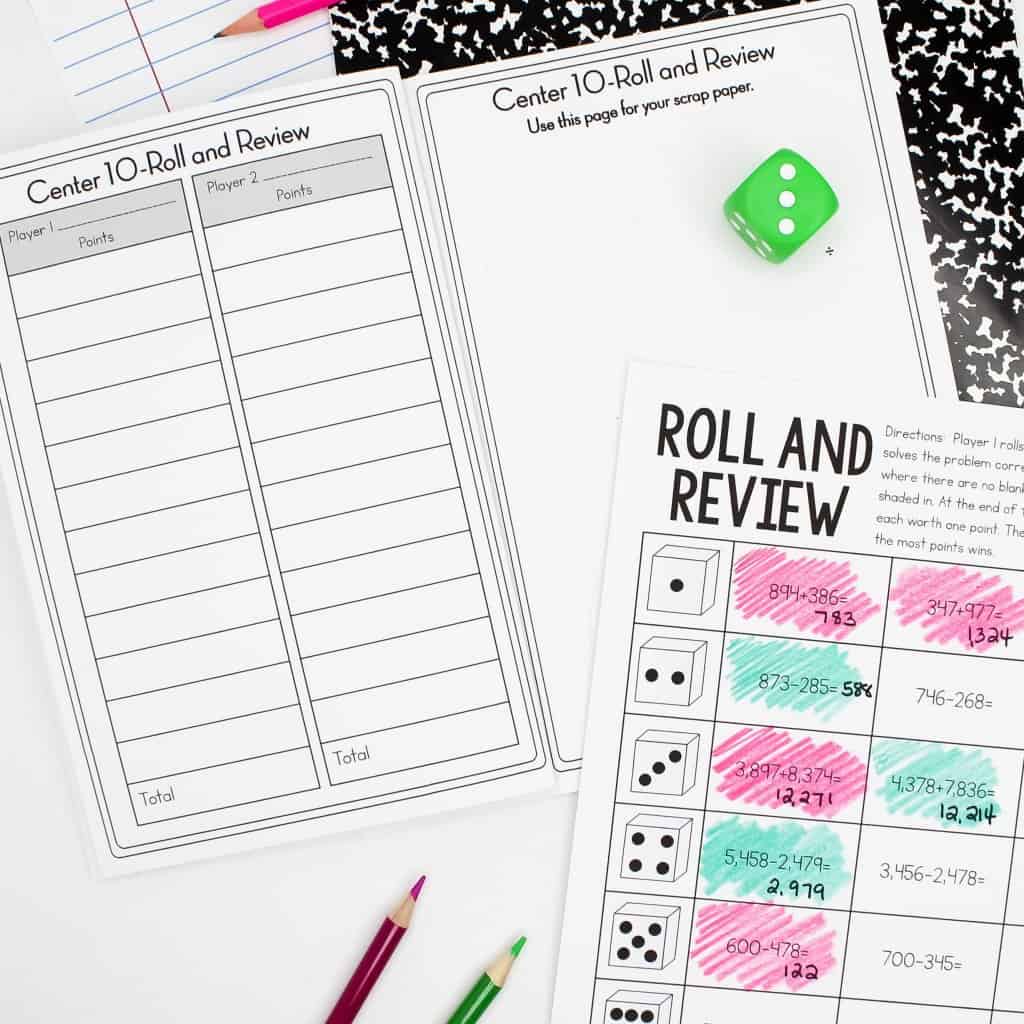
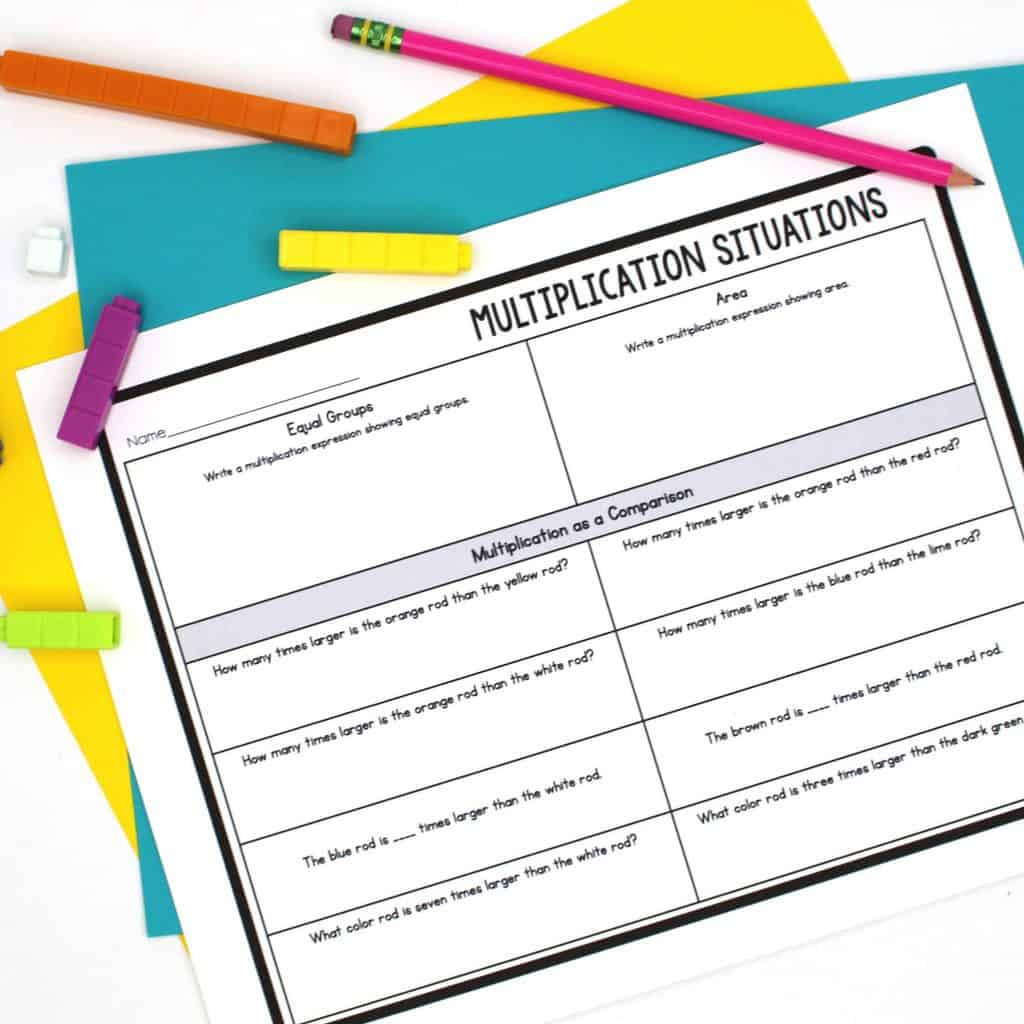
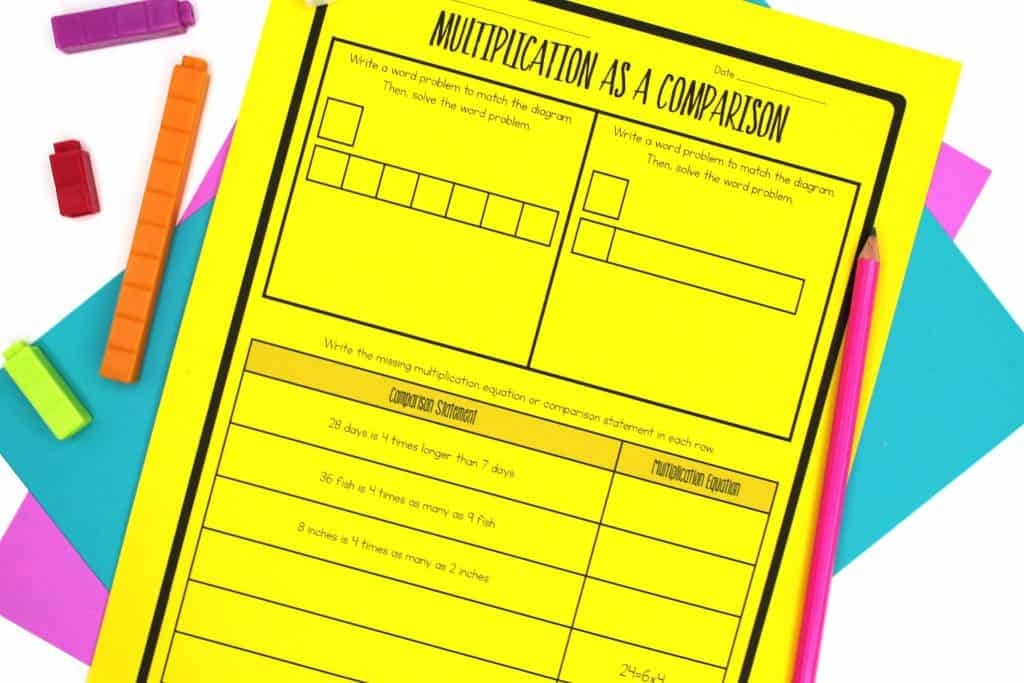
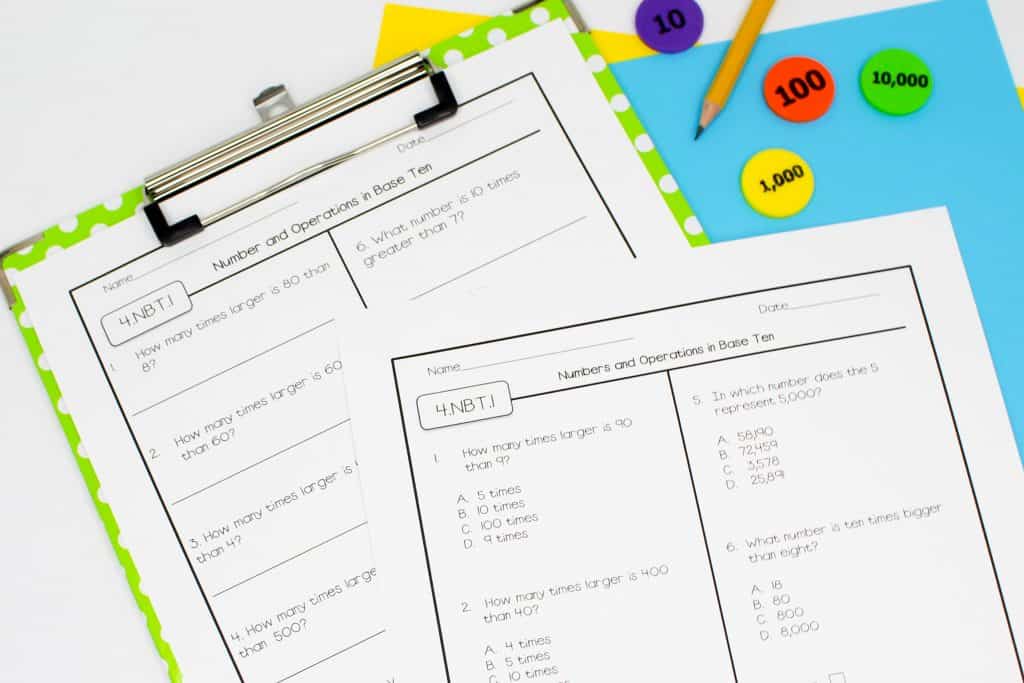
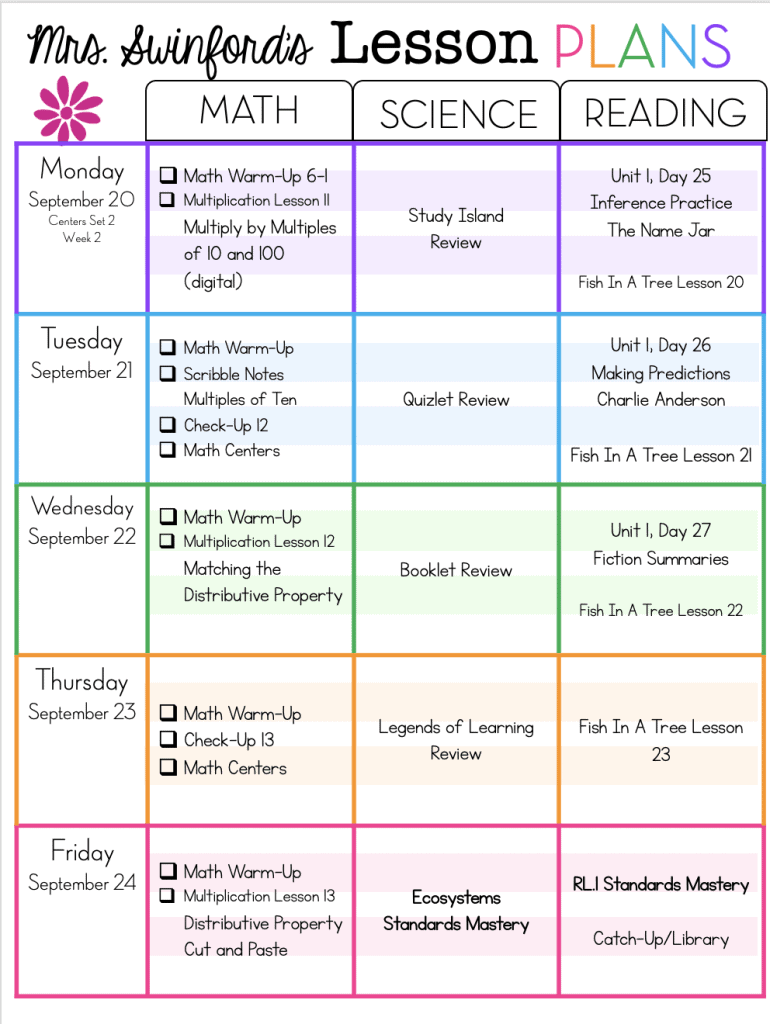
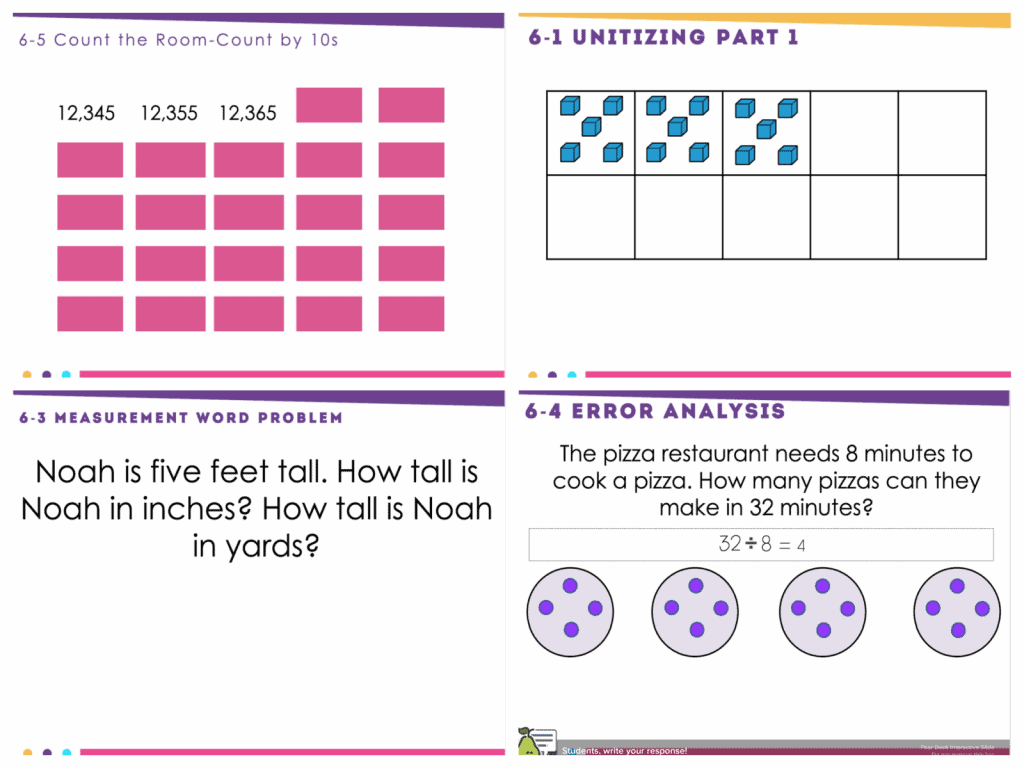
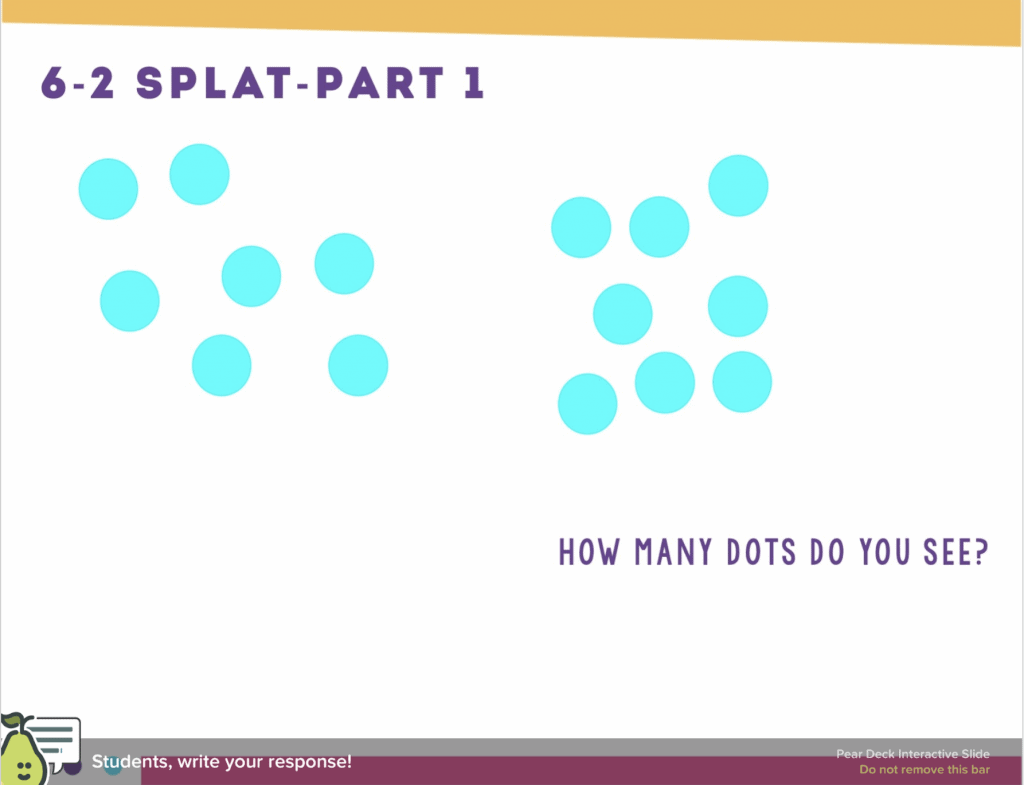
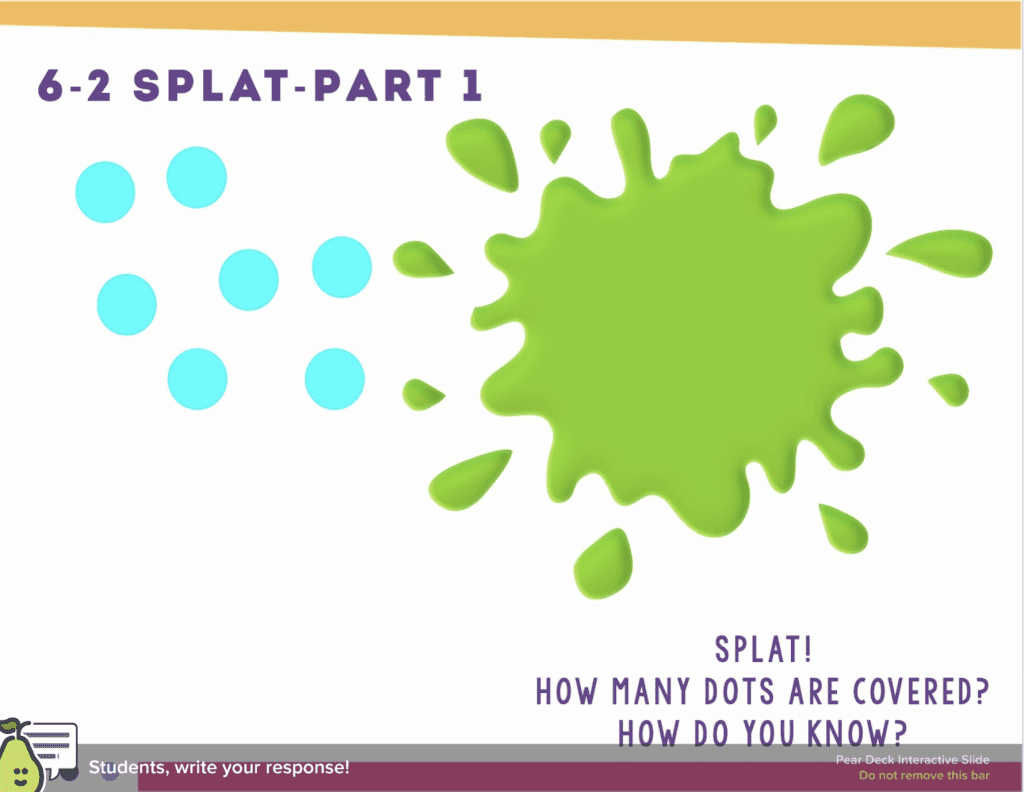
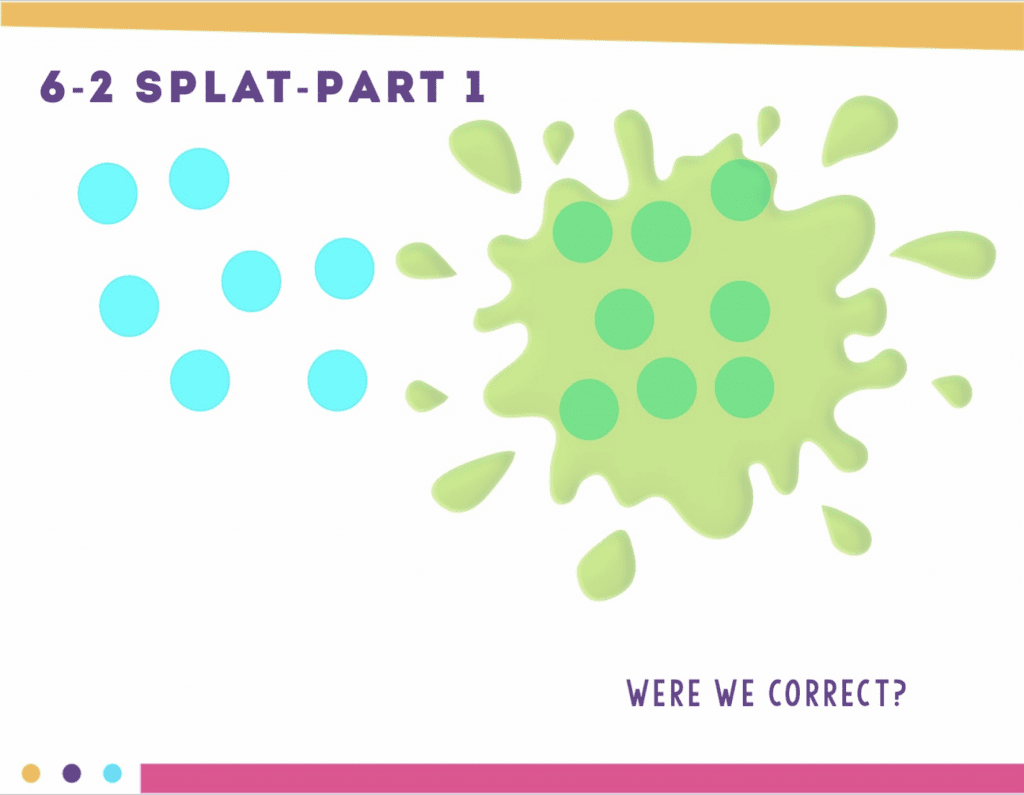
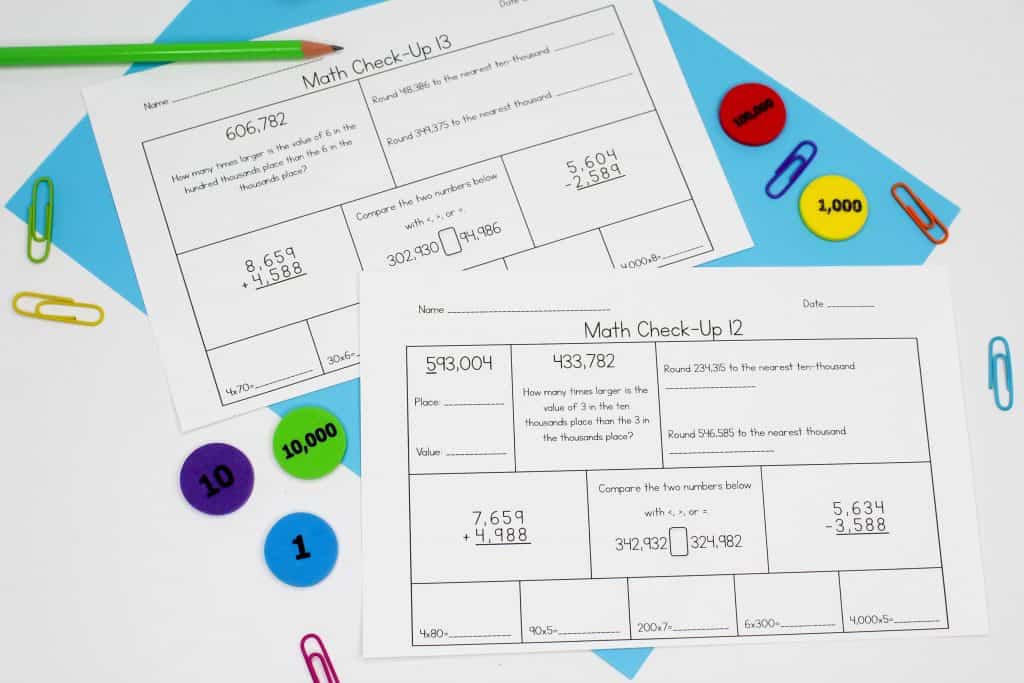
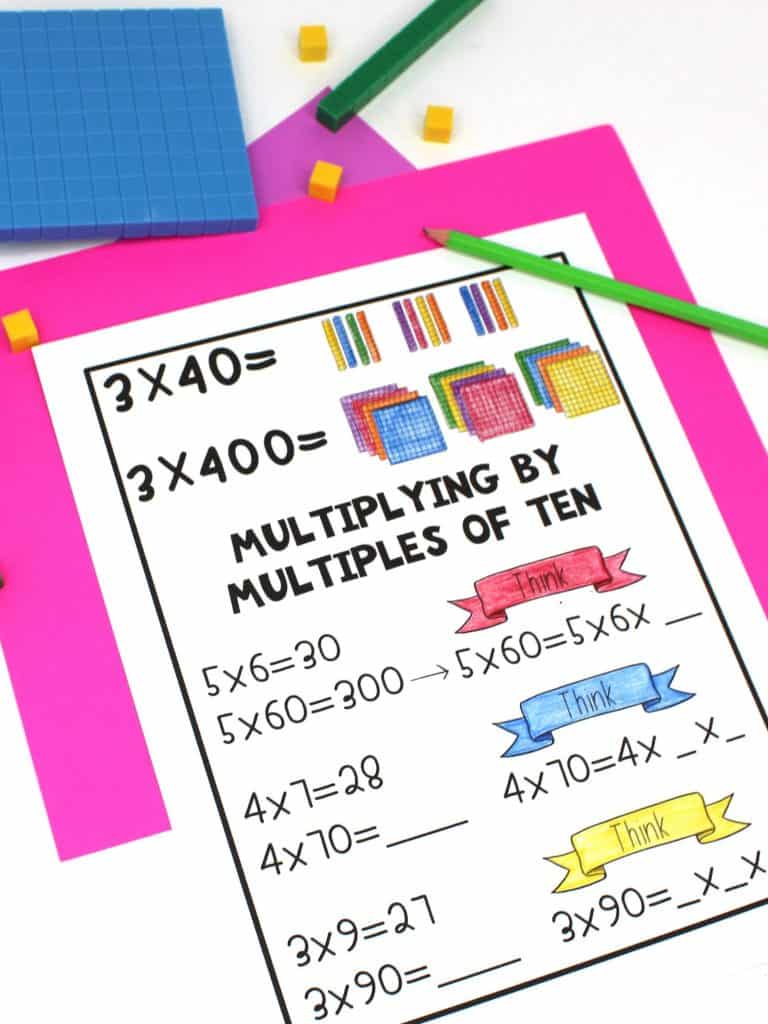
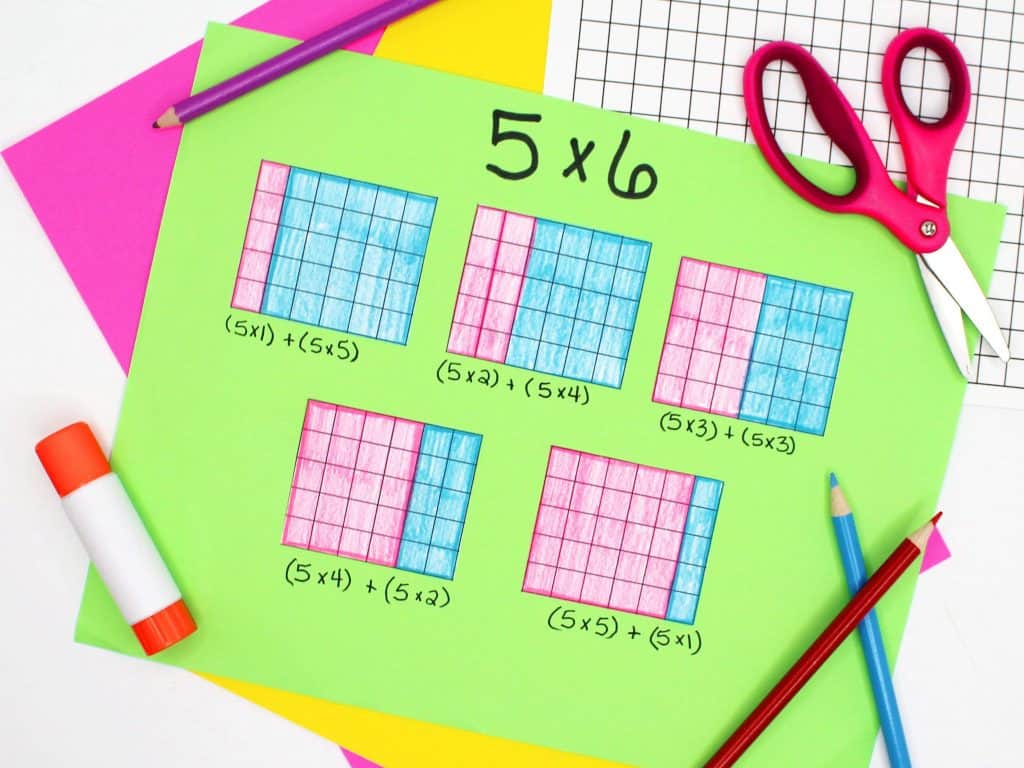


I would like to know more about the math warm-ups pictured. Are those on Pear Deck slides? Do you have any sets available for purchase? This is my first year as a math teacher (after teaching middle school science for 9 years). I am teaching 6th grade math and would like to incorporate more stations and digital warmups. I am also interested in error analysis activities. Thanks for your reply!
Thank you! I have the Warm-Ups on PowerPoint, and I also made a digital version so I could incorporate Pear Deck. They are both included in this resource. The Warm-Ups do include some error analysis. The other error analysis activity is from my fourth grade centers, so I doubt you would want those.
Hello –
This post looks wonderful. Is this available for purchase or just to use for ideas? I looked on TPT for your products but I don’t see this packet.
Thank you.
Which resource are you looking for? The post combines multiple resources, so I want to make sure I point you in the right direction!
What do you use for your lesson plan template?
It’s something I made on Powerpoint!
Hi Ashleigh,
I have purchased a bunch of your resources and absolutely LOVE them! Where are the distributive property materials in this post?
Thanks!
Ditto the distributive property resources shown on the post. Can you purchase them?
Thanks!
It’s in this resource! https://www.teacherspayteachers.com/Product/4th-Grade-Multiplication-Unit-Distance-Learning-Print-Digital-2635294
Thank you! It’s a part of this resource! https://www.teacherspayteachers.com/Product/4th-Grade-Multiplication-Unit-Distance-Learning-Print-Digital-2635294